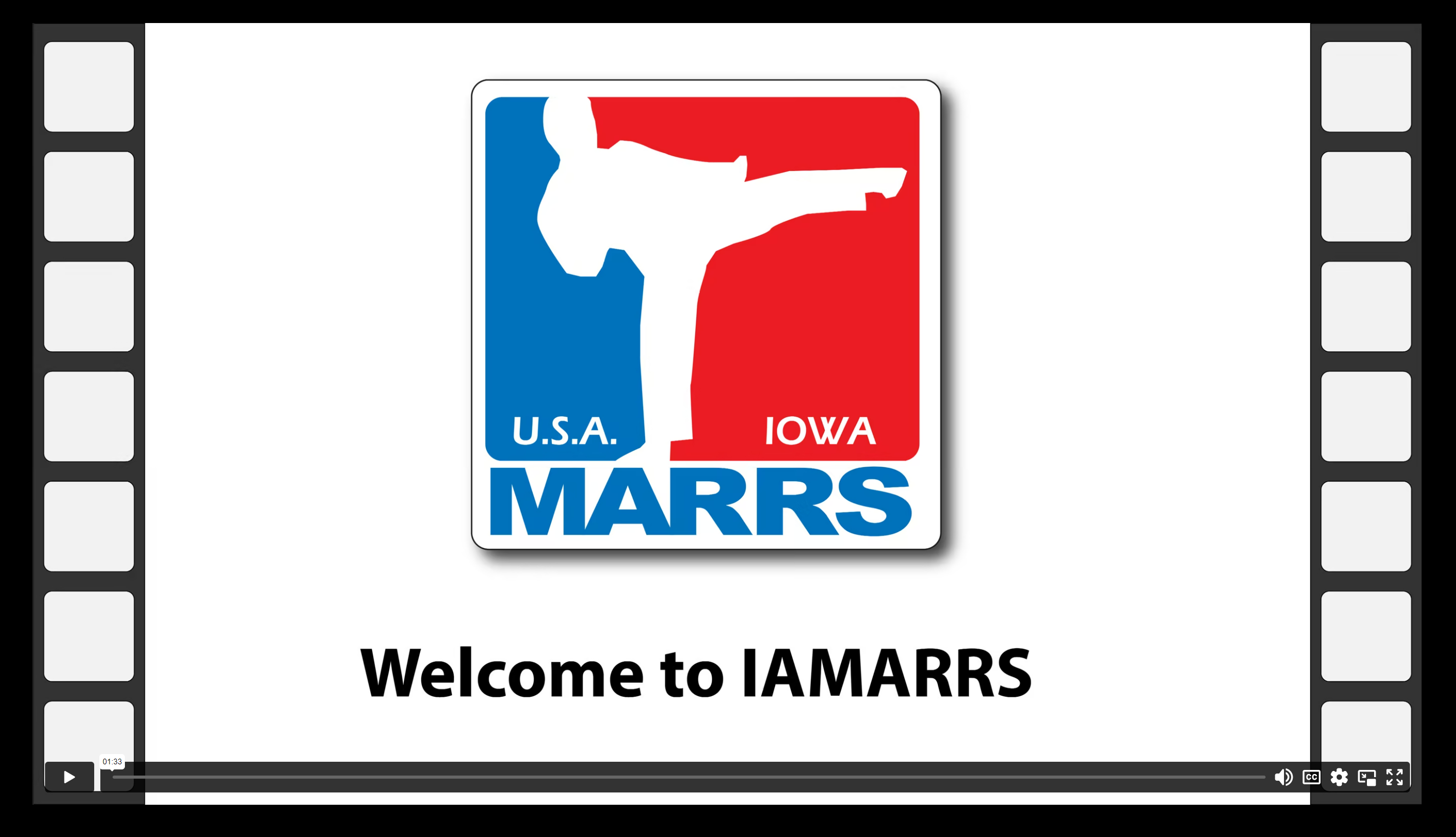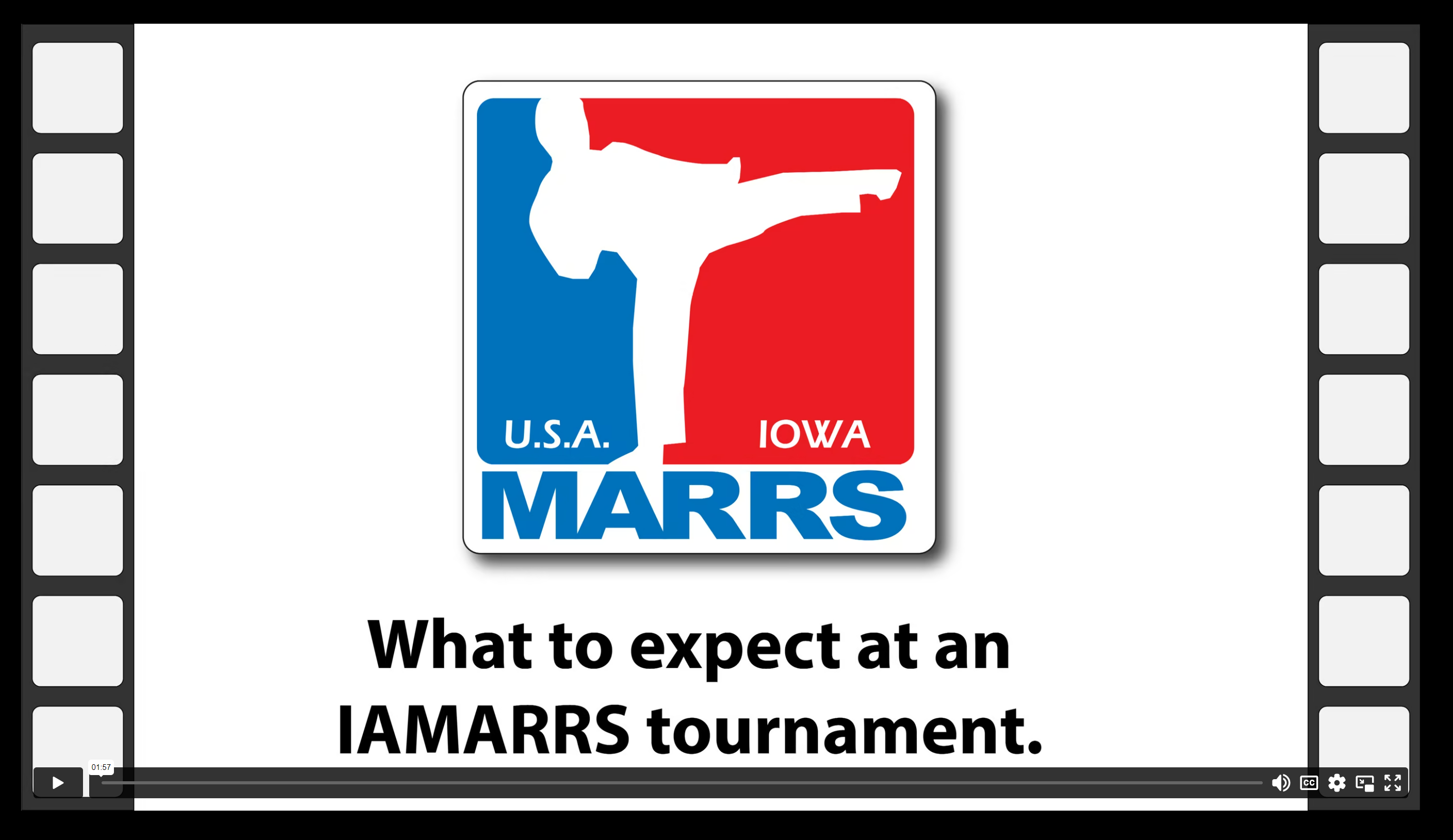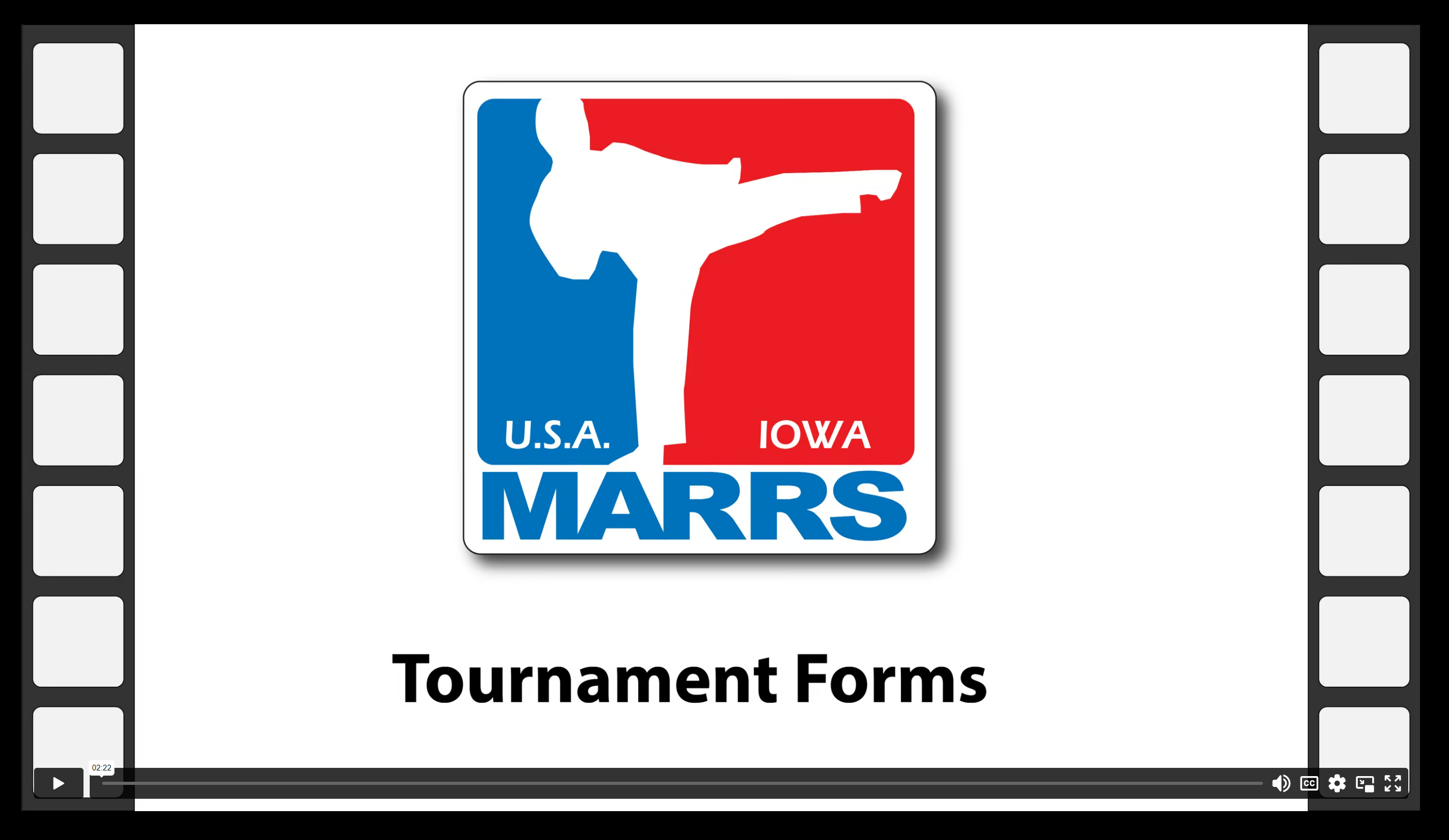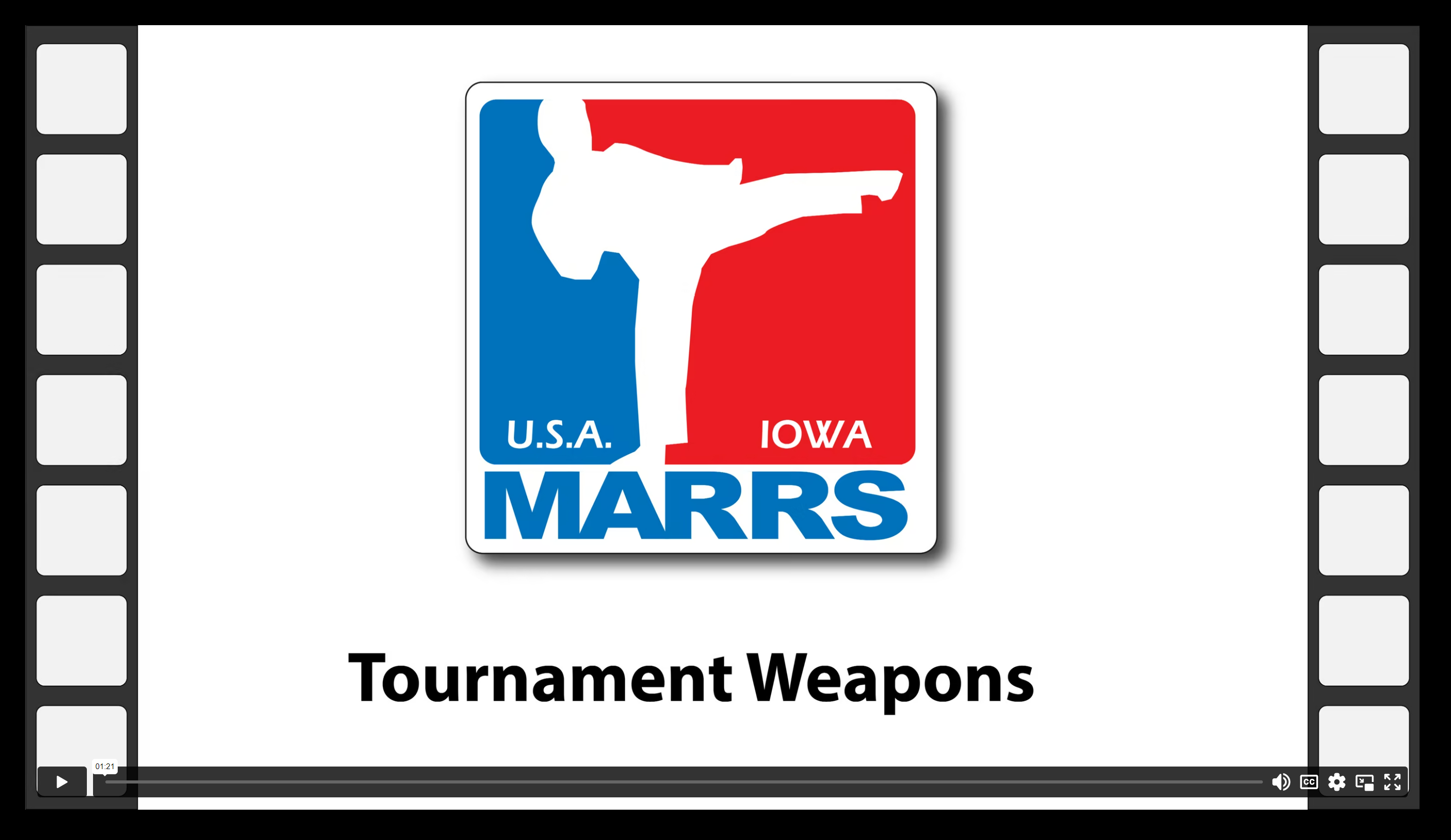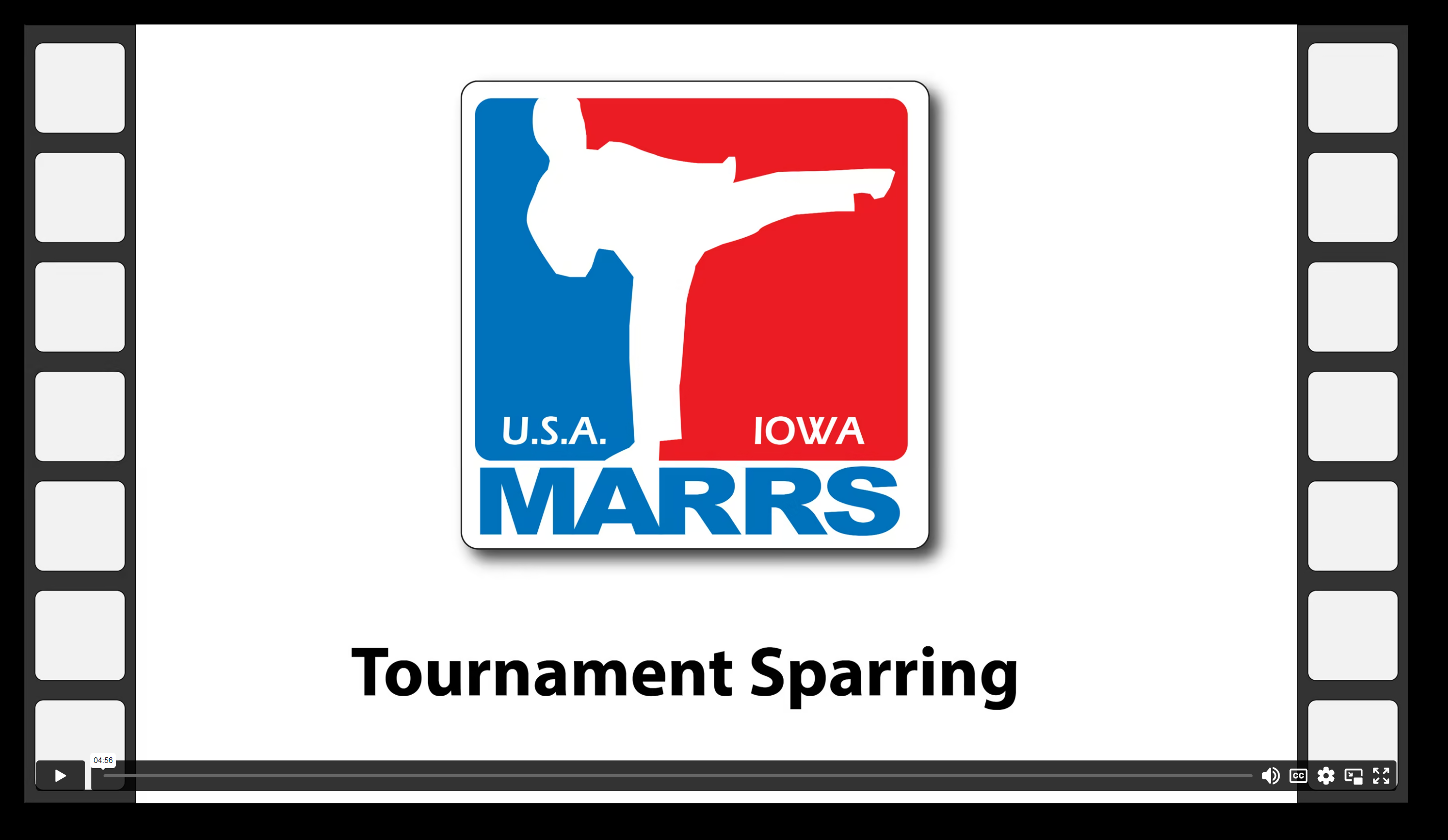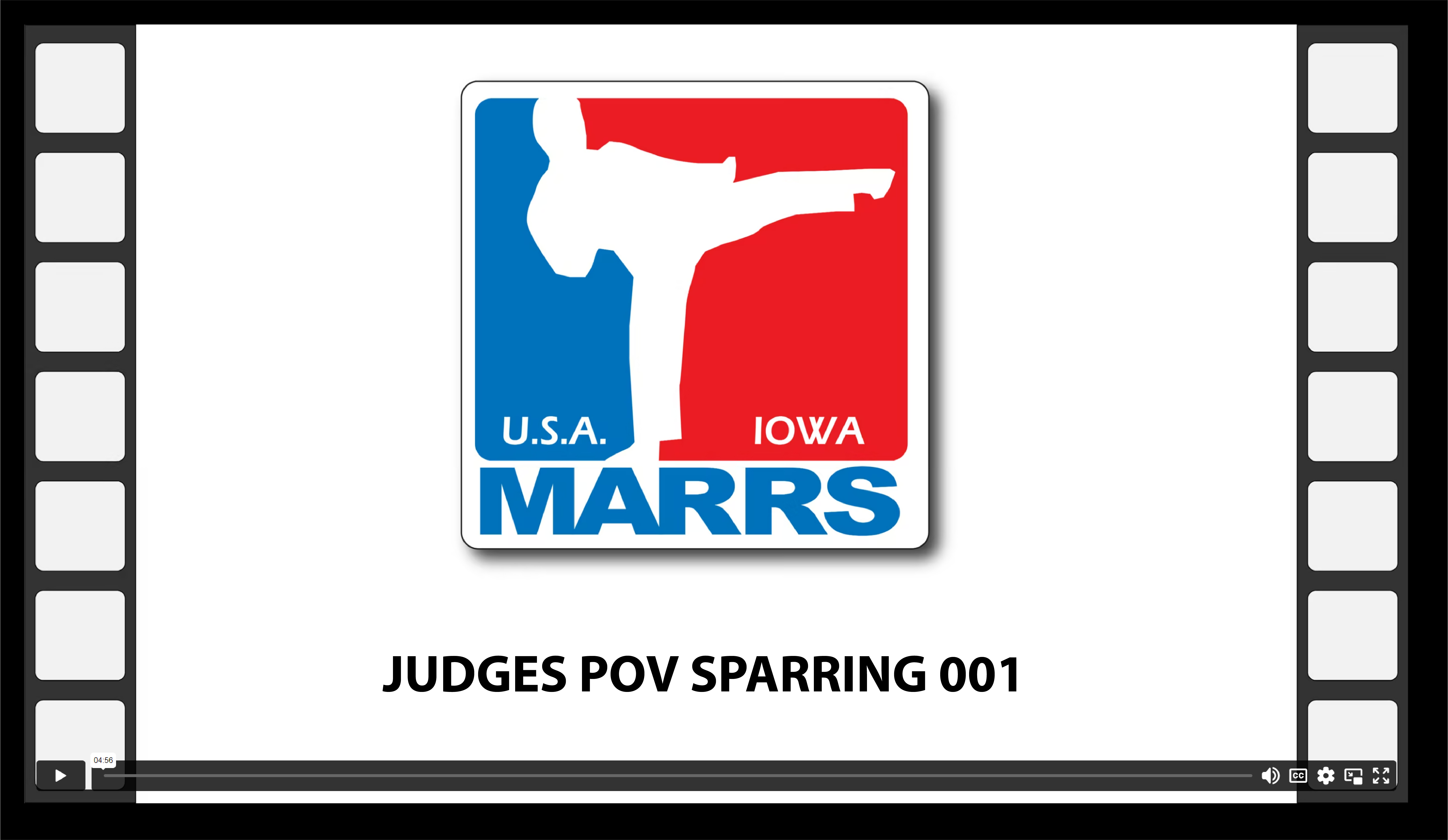





Tournaments
JANUARY
REGISTRATION NOW OPEN
IAMARRS 2025 STATE CHAMPIONSHIPS
January , 17 2026 - Waukee, Iowa
FLYER - MAP - Click here to register
MARCH
IOWA PREMIERE TOURNAMENT 2026
February 28, 2026 - Waukee, Iowa
FLYER - MAP - Click here to register
JUNE
CAPITAL CITY TOURNAMENT 2026
June 6, 2026 - Des Moines, Iowa
FLYER - MAP - Click here to register
SEPTEMBER
HAWKEYE STATE TOURNAMENT 2026
September 16, 2026 - Des Moines, Iowa
FLYER - MAP - Click here to register
DECEMBER
MIDWEST BEST TOURNAMENT 2026
TBD, 2026 - TBD, Iowa
FLYER - MAP - Click here to register
Results
2025 Points Leaders (Click Here)
90 pts for 1st Place
70 pts for 2nd Place
50 pts for 3rd Place
30 pts for 4th Place
10 pts for 5th - 8th Place
State Championships
- Top 6 rated competitors in each division qualify to attend the state championships. See current ratings above to see if you qualify.
- Qualified competitors can attend as many divisions as they wish provided, they qualified to be in the state championship.
- Competitors must compete at their current age and rank as of the day of the state championships; they cannot compete down in rank or age.
- Competitor with the most IAMARRS points in the respective rated division will perform last in weapons and forms, and will be seeded in sparring.
- Winner of each championship division will receive the IAMARRS STATE CHAMPION BELT.
- If you win more than one division at state championships, you will receive one belt but it will have all the divisions that you placed first in embroidered on the belt. Weapons, Forms, Fighting.
Amateur and Semi-Pro State Championship belt is Red and Blue
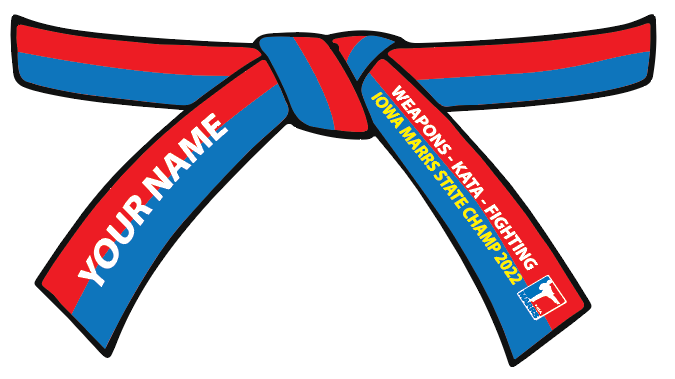
Pro State Championship belt is Black
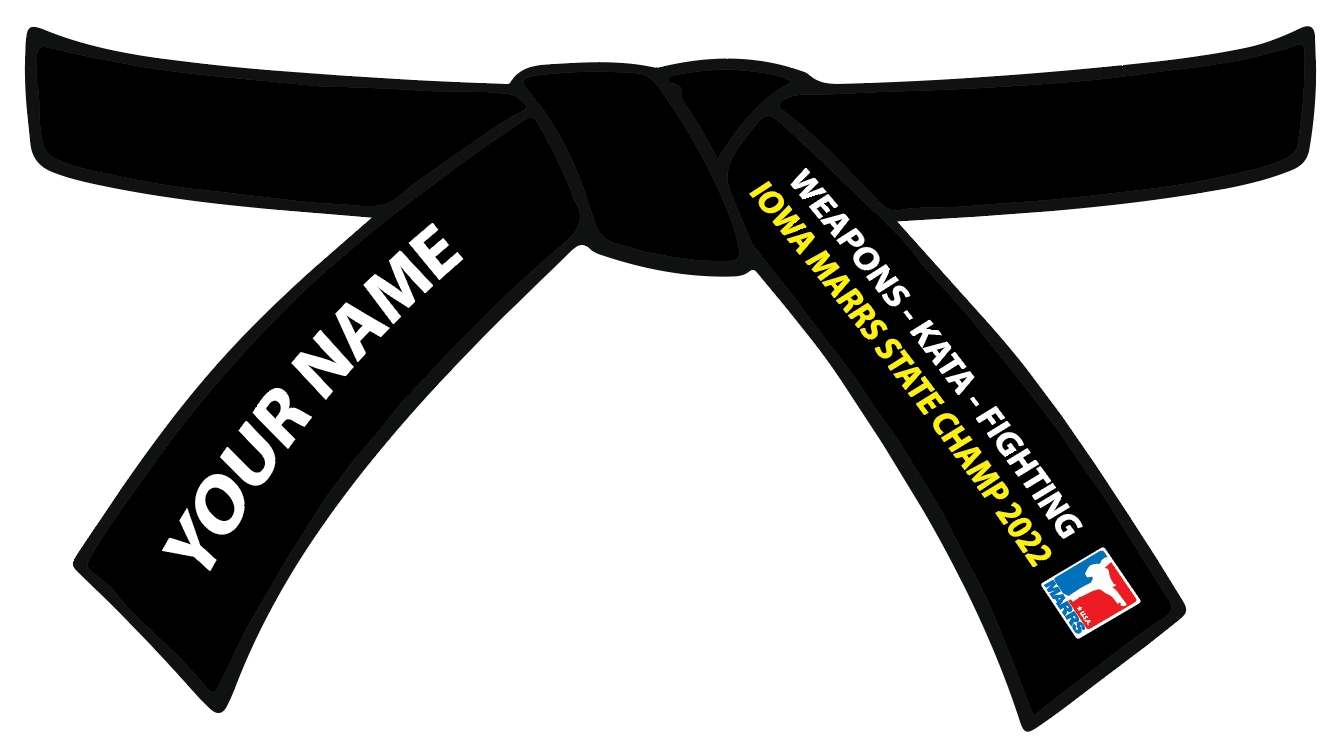
Rated Divisions (Click Here)
2022 State Champions (Click Here)
2023 State Champions (Click Here)
2024 State Champions (Click Here)
Rules
Below is an abbreviated and a detailed description of the IAMARRS rules.
Click here for detailed videos of the rules.
Abbreviated MARRS Rules
Sparring
2 points for kicks, 1 point for punches.
2 min. matches or 7 points (Whichever comes first).
No Groin contact!
Under belt divisions no face contact, touch to the head gear only, light to the body.
Required gear: Head gear, hand pads, foot pads, rib/chest protector, mouth guard, groin cup(for males).
Weapons & Forms
No Introductions.
2 min. time limit.
No sharp weapons.
General
All competitors must be in full uniform.
No parents or coaches in or near the ring.
Must compete at the highest rank you have earned.
Click Here for a Detailed Explanation of Rules
COMPETITOR: Each competitor must present him/herself
to the referee suitably attired with proper uniform and equipment
and physically prepared to compete. If he/she is not prepared
to compete as deemed by the center referee, the competitor may
be penalized for delay of time.
DELAY OF TIME PENALTY: Sparring: An automatic
warning will be issued to the competitor. A penalty point will
be issued for each minute the competitor is not properly ready
to compete. Upon 3 penalty points the offending competitor will
be disqualified. Form: .10 points will be deducted from the offending
competitor's final score. If a competitor is still not ready to
compete after 3 minutes, he/she will be disqualified.
RANK RULE: A competitor must compete at the
highest belt level they have earned in the martial arts. A competitor
can never compete in a division of which he/she had not earned
that rank. Once a competitor competes as a black belt legally,
he/she must always compete as a black belt. A competitor can never
compete in a lower belt division than the level of belt he/she
has earned in the Martial Arts.
RANK RATINGS RULEs: For end of the year points ratings. Points cannot be transferred from amateur to semi-pro nor from semi-pro to pro. If you qualify for the end of the year championship, you must compete at the highest rank in which you competed during the qualifying tournaments for that year.
PROOF OF AGE RULE: All competitors must have
proof of age. If there is a legitimate reason to question a competitor's
age, he/she must present a proof of age (birth certificate, driver's
license, or other acceptable documents to prove his/her age.
COMPETITION AGE RULE: All competitors have the option
of competing in the same division all year long for rating purposes,
by establishing a competition age for the year. The age
a competitor is on December 31 of the current competition year may
may be considered their competition age for that year. They can compete all
year at that age so they can earn rating points in one age division
all year. Alternately, A competitor can always compete in his/her legal chronological
age. The age rule is developed for rating purposes only.
UNIFORM: All competitors must wear a uniform in a good state of repair. The
appropriate color belt or sash must be worn in competition. Sparring:
All sparring uniforms must have sleeves that reach at least to
the middle of the forearm. No T-shirts, sweats, tank tops or shoes
are allowed in the sparring divisions. Forms & Weapons: T-shirts,
tank tops and sweats shirts are allowed in the forms & Weapons divisions if they are part
of the competitor's official school uniform. Uniforms in the forms
and weapons divisions are allowed more liberties because forms
are not a one-on-one competition where the uniform could cause
a decisive disadvantage or advantage to a competitor. Removal
of the uniform top is allowed if the removal is considered relevant
to the artistic expression or safety of the competitor. Shoes
may be worn in forms competition if they do not damage or mark
the competition floor.
COMPETITOR RESPONSIBILITIES:
It is the responsibility of the competitor to know the rules and be ready for competition when called to do so. They must be suitably attired, when competition begins. Three calls will be made for competition at ring side. If the competitor is not at their ring ready to compete when competition begins, they will not be able to compete. If a competitor leaves the ring after the competition begins and is not present when their name is called to compete, they will be disqualified. No late competitors will be allowed to join the division once it has begun.
REQUIRED SAFETY EQUIPMENT: MARRS
approved head gear, hand pads, foot pads, rib/chest protector, mouthpieces and groin
cups (for male competitors only) are mandatory for all competitors
in sparring divisions. The competitor's equipment will be checked
and if it is deemed unsafe, he/she will be asked to change the
equipment before he/she can compete. Hand Pads: A soft padded surface must cover the fingers, wrist and any striking
surface of the hand. Foot Pads: A soft padded
surface must cover the instep, sides, toes, ankle and back of
the heel of the foot. The bottom of the foot does not have to
be padded.
Head Gear: The front, sides and back
of the head must be covered by a soft padded surface. Insufficiently-padded
gloves, foot and head gear will not be allowed.
Rib Guard/Chest Protector: Rib/Chest protection must cover ribs from side to side and minimum height from waist line to center of chest.
Equipment must
be in a good state of repair and must be free of heavy taping,
tears or any other repairs that may cause injury. The approval
or denial of the equipment is ultimately determined by the tournaments
head rules arbitrator. Shin pads and a face shield are highly recommended
for additional safety to all sparring competitors but not required.
REFEREE'S: The referee is the most experienced
official in the ring and is thoroughly versed on the rules and
order of competition. He/she promotes the safety of the competitors,
enforces the rules and ensures fair play. To this end, he/she
starts and stops the match, awards points, makes penalty decisions,
administrates the voting of the other judges, communicates clearly
with the scorekeeper and timekeeper, and announces the winner
of each match. Added Powers of the Referee: 1) Match starts and ends only with his/her command (not the command
of the timekeeper); 2) Has final decision on any disputes on score;
3) Has the power to issue warnings and award penalty points without
a majority decision: 4) Can overrule a majority call only to issue
a warning or a penalty point: 5) Automatically has power to disqualify
a competitor who receives (3) penalty points; 6) Has power to
issue time-outs. A competitor can ask for a time-out, but it is
the determination of the referee to issue one. The disqualification
of a competitor, where disqualification is not automatic, is determined
only by a majority vote of the judges.
JUDGES: The judges call points as they see them.
They may be consulted by the center referee to help in determining
penalties or warnings, although the referee alone has the power
to issue them. They will be asked to vote on disqualification
rulings. It is the majority vote of the judges and referee that
determines a scoring point.
CALLS AN OFFICIAL MAY MAKE: When the referee
believes there has been a significant exchange of techniques,
or when signaled to do so by a corner judge, he/she shall call
out the word, "STOP!" in a loud voice. The referee
shall then returns the competitors to their starting marks and
addresses the judges by saying "JUDGES CALL!" .
All judges and the center referee cast their votes simultaneously
and assertively. Here is a list of common calls:
- Judge Sees A Point - He/she should hold up both colors or hold up one arm if colors are not being used. At the same time, he/she yells out the word "CALL!" in a loud, clear voice to let the referee know he/she has a call.
- Point Calling - When signaled by the referee, a judge raises the appropriate color (red or white usually) if colors are being used or points to the competitor who scores the point. If a competitor scores a two point kick, the officials should hold up or point with two fingers (index and middle fingers). If only one points is being called, the judge should point with only one finger (Index finger).
- No Point Scored - An official crosses his/her wrist at waist level or holds both colors down to indicate that he/she believes that a point was not scored.
- Did Not See If A Point Was Scored - The officials holds his/her hand over his/her eyes indicating that he/she could not see whether a point was scored or not. Indicates the official was not in position to see if a point scored. (When using this signal, it has the same result as saying no point, but gives the referee, competitors and fans the reason why you are not calling the point).
- Clash - Officials make a motion as though they are hitting both fists together, indicating that both competitors scored at the same time.
- Penalty - The judge waves the color of the offending competitor in a circular motion. If no colors are used the judge waves the hand and arm in a circular motion while pointing at the offending competitor.
- Disqualification - A disqualification vote is taken separately from any other vote. When a disqualification vote is asked for , the referee will say, "JUDGES CALL" . The judges will then hold the color or point to the competitor who is to be disqualified. If the judge does not feel the competitor should be disqualified, he/she crosses his/her wrist or hold both colors down at waist level.
LATE CALLS: All officials should
make their calls at the same time. If, in the opinion of the center
referee, a corner judge is making a late call intentionally, the
referee can disqualify the call (noise not allowing the judges
to hear the referee and the honest mistake of raising the wrong
color or pointing at the wrong competitor should be taken into
consideration not to disqualify the call).
NUMBER OF OFFICIALS: At least three officials
are required in all divisions.
PROTEST: A competitor has the right to protest
an infraction of the rules or if a possible mistake was made (not
a judgment call). If a competitor wishes to protest they should
first let the referee know they believe there has been an infraction
of the rules or a mistake has been made. The referee will summon
the arbitrator to the ring to render a decision if the referee
cannot settle the protest to the competitor's satisfaction. All
protest must be made in an orderly, proper and sportsmanlike manner. All protest must be made immediately. Protest are not
allowed once competition has resumed. A competitor may be penalized
if he/she is protesting improperly or without proper cause.
LATE ENTRIES: Once a division has started (the
first competitor has started his/her form/weapon routine or the
first fight divisional fight has started) no competitor/s can
be added to that division. BE ON TIME!
THE RING: Each ring will be posted with a ring
number visible to competitors, officials, and medical personnel
from across the floor. All youth and adult rings
shall be approximately 16' x 16'.
WEIGHING-IN: It is mandatory for all adult fighting
competitors - who are in weighted divisions - to weigh in before
competition. Only one official weigh-in is required. All competitors
must fight in his/her weight division. A competitor cannot fight
up or down in another weight division that he/she has not made
the proper weight. It is the responsibility of a tournament official
to weigh and properly record the competitors weight.
ORDER OF COMPETITION: Forms/Weapons: Competitor
cards will be shuffled and drawn randomly for order of competition. Sparring: Once the final call for the sparring
division has been made at ring side and the cards have been shuffled
then cards will be selected by random, but certain allowances may be given to competitors from the same school
who are match up in the first round of competition. They may be
separated randomly from each other in the first round if possible. Competitors cannot pick who they want or do not want to
fight.
SEEDING: First to register gets the bye.
SPARRING RULES
LENGTH OF MATCH: Two minute running time unless seven points are scored before time has expired. If a match is tied at the end of two minutes, sudden victory (first person to score a point) overtime period will determine the match.
POINT VALUES AND WINNER DETERMINATION: All legal hand techniques that score will be awarded one (1) point. All legal kicking techniques that score will be awarded two (2) points. All penalty points awarded will be awarded one (1) point. The competitor who earns seven (7) points by the end of the two minutes or whoever is ahead at the end of the two minutes is declared the winner. All grand championship matches are two minute running time and total points.
MARJORITY VOTE: Points are awarded by a majority vote of all judges. The majority of judges do not have to agree on the same technique being scored, only that a point was scored. A majority of the judges calling the point must call a two (2) point kick before two points can be rewarded. Otherwise only one point is awarded.
WHAT IS A POINT: A point is a controlled legal sport martial arts technique scored by a competitor in-bounds and up-right without time being called that strikes a competitor with the allowable amount of focused touch contact.
LEGAL TARGET AREAS: Entire head gear, ribs, chest, abdomen and kidneys.
ILLEGAL TARGET AREAS: Spine, back of neck, throat, sides of the neck, groin, legs, knees, back and face of all youth and under black belt adult competitors.
NON-TARGET AREAS: Hips, shoulders, buttocks, arms, and feet.
LEGAL TECHNIQUES: Legal techniques are all controlled sport martial arts techniques involving the hands or feet, except those listed as illegal.
ILLEGAL TECHNIQUES: Head butts, hair pulls, bites, scratches, elbows, knees, eye attacks
of any kind, take downs, ground fighting, any stomps or kicks
to the head of a downed competitor, slapping, grabbing for more
than one second, uncontrolled blind techniques, any sweeps and
any other uncontrolled dangerous techniques that are deemed unsafe
in sport martial arts. If a competitors hands touch the floor during the execution of a legal technique, it will be deemed no-point and a warning may be issued.
GRABBING: A competitor may grab the uniform
top of his/he opponent in an attempt to score with a sport martial arts
technique for only one second (immediately) ,
after which time he/she must release the uniform. Likewise, the
uniform pants may be grabbed for one second to an upright opponent
in an attempt to score.
SWEEPS, TAKEDOWNS, GROUND FIGHTING: Sweeps not
to take down an opponent, but only to obstruct the balance so
as to follow up with a sport martial arts technique can only be executed
to the back of the front leg at mid-calf or below. A sweep must
be deemed a proper sweep and not a kick, to be legal. No takedowns
or ground fighting is allowed. The match will be stopped the moment
any body part other than the feet are touching the ground.
LIGHT TOUCH CONTACT: Means there is no penetration
or visible movement of the competitor as a result of the contact.
Light touch is allowed to all legal target areas except to the
face of all youth and under black belt adult competitors. Contact
is not required in order to score. If a judge feels that the technique
was pulled in an effort to control the movement then he/she will
be awarded a point providing 1) The person doing the technique
could have successfully made contact with the intended target.
2) The technique was not clearly blocked by the opponent.
MODERATE TOUCH CONTACT: Means slight penetration
or slight target movement. Moderate touch contact may be made
to all legal target areas except the face. Contact is not required
in order to score. If a judge feels that the technique was pulled
in an effort to control the movement then he/she will be awarded
a point providing 1) The person doing the technique could have
successfully made contact with the intended target. 2) The technique
was not clearly blocked by the opponent.
WARNINGS AND PENALTIES: One and only one warning
is allowed for breaking the rules before a penalty point is awarded.
After the first warning is given, a penalty point is awarded to the opponent of the offending participant. If a competitor receives four
warning (three penalty points) in any one match, he/she will be
disqualified. If the severity of the rules violation is
deemed by the referee to be severe, a competitor may be disqualified.
Other Penalty Rules: A competitor cannot be
penalized and still receive a point on the same call. A competitor
can receive a point for a proper technique and another point from
a penalty call against his/her apponent (two points awarded).
If, in the opinion of the referee and/or the medical personnel,
a competitor cannot continue because of an injury caused by an
illegal penalized attack executed by his/her competitor, the offending
competitor shall be automatically disqualified immediately.
Other Cause for Penalization: Attacking illegal
and non-target areas, using illegal techniques, running out of
the ring to avoid fighting, falling to the floor to avoid fighting,
continuing after being ordered to stop, excessive stalling, blind,
negligent or reckless attacks, uncontrolled techniques, showing
unsportsmanlike behavior from the competitors coaches,
friends, etc., excessive contact, and delay of time are examples
of possible penalization.
DISQUALIFICATION: Requires a majority vote by
all officials, unless it is an automatic disqualification.
Non-Competing Penalty: If, in the majority opinion of the officials, it is considered that the competitors are not making an obvious attempt to fight in the true spirit of competition, both competitors will be warned and if it continues he/she may be disqualified.
Wrong
Division: If any competitors competes in a division
he/she does not qualify to compete in due to age, weight, rank,
gender, style, etc., they will be disqualified.
COACHING: Coaches and parents must stay out
of the designated competition area. Any violation to this rule
may result in point deductions, warning points or disqualification.
1. Never, at any time, can a coach enter the ring without the
referee's permission; 2. No abusive, violent, unsportsmanlike
or overzealous coaching; 3. Coaches cannot ask for a time out
(only the competitor may ask for a time out); 4. Coaches can never,
at any time, interfere with the proper running of the ring or
the decisions of the judges.
OUT-OF-BOUNDS: A competitor is out-of-bounds
when he/she no longer has both feet touching inside or on the
boundary line. An out of bounds competitor cannot score a point
while out of bounds. An in bounds competitor can score on an out
of bounds competitor if the center referee has not called a stop to the match.
WEAPONS AND FORMS RULES
TIME LIMIT: Each forms or weapons routine must be two (2) minutes or less. The time starts once the competitor enters the competition ring.
TIES: Ties for 5th through 8th place are never
run off. If there is a tie for 1st through 4th place, then the
majority judges scores will determine the winner. If this does
not break the tie, then the tie will remain and both competitors
will earn the same award.
INTRODUCTIONS: No introductions will be used in any divisions. When a competitor is called to perform they will simply walk to the center of the ring, make eye contact with the center official, bow and begin their routine.
OPEN FORMS: An empty hand martial arts kata/form. May, but is not required to include tricks, jumps or spins. May be self created or instructor taught.
TRADITIONAL FORMS(if offered): These forms must capture the essence of classic martial arts movements, displaying the traditional techniques, stances, and footwork.(no Weapons) Emphasis is placed on execution of technique, application of technique, balance, speed, power, solid stances, and focus. Forms may be unmodified or modified from what a system or school considers to be the original version of the form; however, performance of the following movements will result in a downgrade of the form, or upon unanimous vote of the judges, a “no score” as a form inappropriate for the division: Movements that involve more than a 360 degree spin, require the body to be inverted more than parallel to the floor, more than two kicks with the same leg without putting the foot down in between; front or back flips; cartwheels; front or side leg splits; or any other gymnastic movements or extreme exhibitions of flexibility or agility with the body that are deemed in the opinion of the judges to be inappropriate for the division pursuant to the general guidelines set forth here. (**Forward Roll is a legal Traditional Technique.)
WEAPON INSPECTION: The center referee may ask to inspect your weapon to determine if it is safe for competition use. If it is deemed unsafe then the competitor will have 2 miniutes to find an alternate weapon or forfeit the division.
DROPPING YOUR WEAPON: For safety, a competitor who unintentionally drops his/her weapon, will be automatically disqualified. If a competitor recklessly or carelessly misused his/her weapon, he/she may be penalized of disqualified.
BROKEN WEAPON: If for any reason
a competitors weapon were to break during competition, he/she
will be allowed one (1) minute to find a replacement weapon. Each
judge will automatically deduct one full point from their score.
It is the competitors responsibility to insure their weapons are
clear of defects and are in safe working order.
STARTING A FORM OVER: If a competitor starts
his/her form over because of a memory lapse or any other reason
due to his/her own negligence, he/she may perform the form again.
Each judge will automatically deduct one full point from their
score. The two minute time limit will start over. A competitor
can only start over one time. If a competitor has to start over
not due to his/her negligence, he/she will not be penalized on
the start over.
Contact Us
Feel free to contact us with any questions. director@iamarrs.com.
